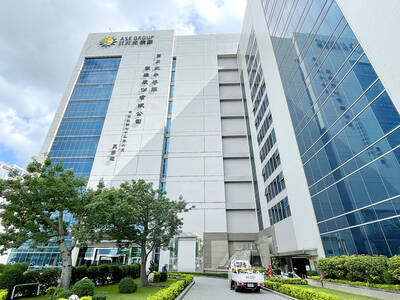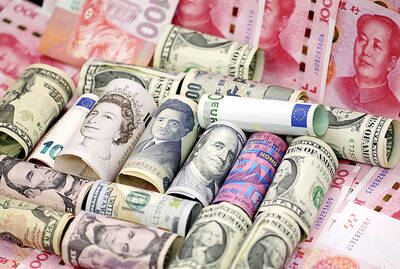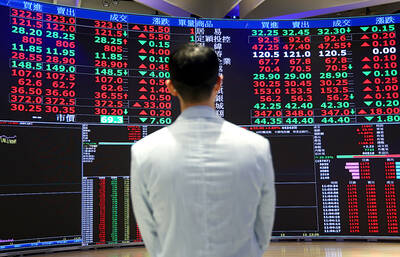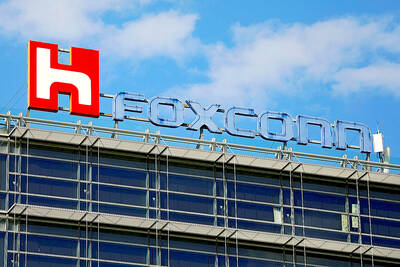Thirty local firms made this year’s Global Innovation 1000 study — one fewer than last year — as global firms assign more importance to research and development (R&D) to stay competitive and profitable, accounting firm PricewaterhouseCoopers LLP (PwC) said in a report on Tuesday.
R&D spending totaled NT$444.3 billion (US$14.45 billion) in Taiwan, a 0.2 percent increase from last year, which accounted for 3.3 percent of their combined revenue, PwC Taiwan said.
The growth lags far behind an 11.4 percent increase for the world’s top 1,000 companies, which spent a record US$782 billion on R&D this year, PwC Taiwan executive vice president Paul Liu (劉鏡清) said.
Revenues for the 1,000 firms also grew 11.4 percent annually, even though the newest figures left R&D intensity, or innovation spending as a percentage of revenue, unchanged at 4.5 percent from last year, the annual survey said.
However, the 88 high-leverage innovators saw their sales advancing 2.6 times as fast as the pool, while their market value soared 2.9 times higher, it said.
Local firms Taiwan Semiconductor Manufacturing Co (TSMC, 台積電), Pegatron Corp (和碩), Pou Chen Corp (寶成工業) and Siliconware Precision Industries Co (矽品精密) were recognized as high-leverage innovators, the survey said.
With regard to R&D spending, Hon Hai Precision Industry Co (鴻海精密) leads the pack in Taiwan, followed by TSMC, MediaTek Inc (聯發科), Delta Electronics Inc (台達電) and Asustek Computer Inc (華碩), it said.
R&D spending by the top 20 companies reached US$214.5 billion, accounting for 27.4 percent of the total, the survey said.
For the second year in a row, Amazon.com Inc led the top-20 list with R&D expenditure of US$22.6 billion, up a massive 40.6 percent from last year, it found. Alphabet Inc was second, spending US$16.2 billion.
Facebook Inc posted the biggest climb on the top-20 list, up six places from its position last year to No. 14, it said.
All surveyed regions increased their R&D expenditure, with China staging the biggest increase of 34 percent, followed by Europe’s 14 percent gain and North America’s 7.8 percent increase, the survey said.
R&D spending rose in the computing and electronics, healthcare, auto, and software and Internet — the four industries that dominate the top 20 list, it said.
The survey observed a US$13 billion R&D surge in spending in computing and electronics, from flat spending over the previous five years, almost a third of which was attributable to increased spending at Samsung Electronics Co and Apple Inc.

EXPANSION: The investment came as ASE in July told investors it would accelerate capacity growth to mitigate supply issues, and would boost spending by 16 percent ASE Technology Holding Co (ASE, 日月光投控), the world’s biggest chip assembly and testing service provider, yesterday said it is investing NT$17.6 billion (US$578.6 million) to build a new advanced chip packaging facility in Kaohsiung to cope with fast-growing demand from artificial intelligence (AI), high-performance-computing (HPC) and automotive applications. The new fab, called K18B, is to commence operation in the first quarter of 2028, offering chip-on-wafer-on-substrate (CoWoS) chip packaging and final testing services, ASE said in a statement. The fab is to create 2,000 new jobs upon its completion, ASE said. A wide spectrum of system-level chip packaging technologies would be available at

Taiwan’s foreign exchange reserves hit a record high at the end of last month, surpassing the US$600 billion mark for the first time, the central bank said yesterday. Last month, the country’s foreign exchange reserves rose US$5.51 billion from a month earlier to reach US$602.94 billion due to an increase in returns from the central bank’s portfolio management, the movement of other foreign currencies in the portfolio against the US dollar and the bank’s efforts to smooth the volatility of the New Taiwan dollar. Department of Foreign Exchange Director-General Eugene Tsai (蔡炯民)said a rate cut cycle launched by the US Federal Reserve

HEAVYWEIGHT: The TAIEX ended up 382.67 points, with about 280 of those points contributed by TSMC shares alone, which rose 2.56 percent to close at NT$1,400 Shares in Taiwan broke records at the end of yesterday’s session after contract chipmaker Taiwan Semiconductor Manufacturing Co (TSMC, 台積電) hit a fresh closing-high amid enthusiasm toward artificial intelligence (AI) development, dealers said. The TAIEX ended up 382.67 points, or 1.45 percent, at the day’s high of 26,761.06. Turnover totaled NT$463.09 billion (US$15.22 billion). “The local main board has repeatedly hit new closing highs in the past few sessions as investors continued to embrace high hopes about AI applications, taking cues from a strong showing in shares of US-based AI chip designer Nvidia Corp,” Hua Nan Securities Co (華南永昌證券) analyst Kevin Su

Nvidia Corp’s major server production partner Hon Hai Precision Industry Co (鴻海精密) reported 10.99 percent year-on-year growth in quarterly sales, signaling healthy demand for artificial intelligence (AI) infrastructure. Revenue totaled NT$2.06 trillion (US$67.72 billion) in the last quarter, in line with analysts’ projections, a company statement said. On a quarterly basis, revenue was up 14.47 percent. Hon Hai’s businesses cover four primary product segments: cloud and networking, smart consumer electronics, computing, and components and other products. Last quarter, “cloud and networking products delivered strong growth, components and other products demonstrated significant growth, while smart consumer electronics and computing products slightly declined,” compared with the